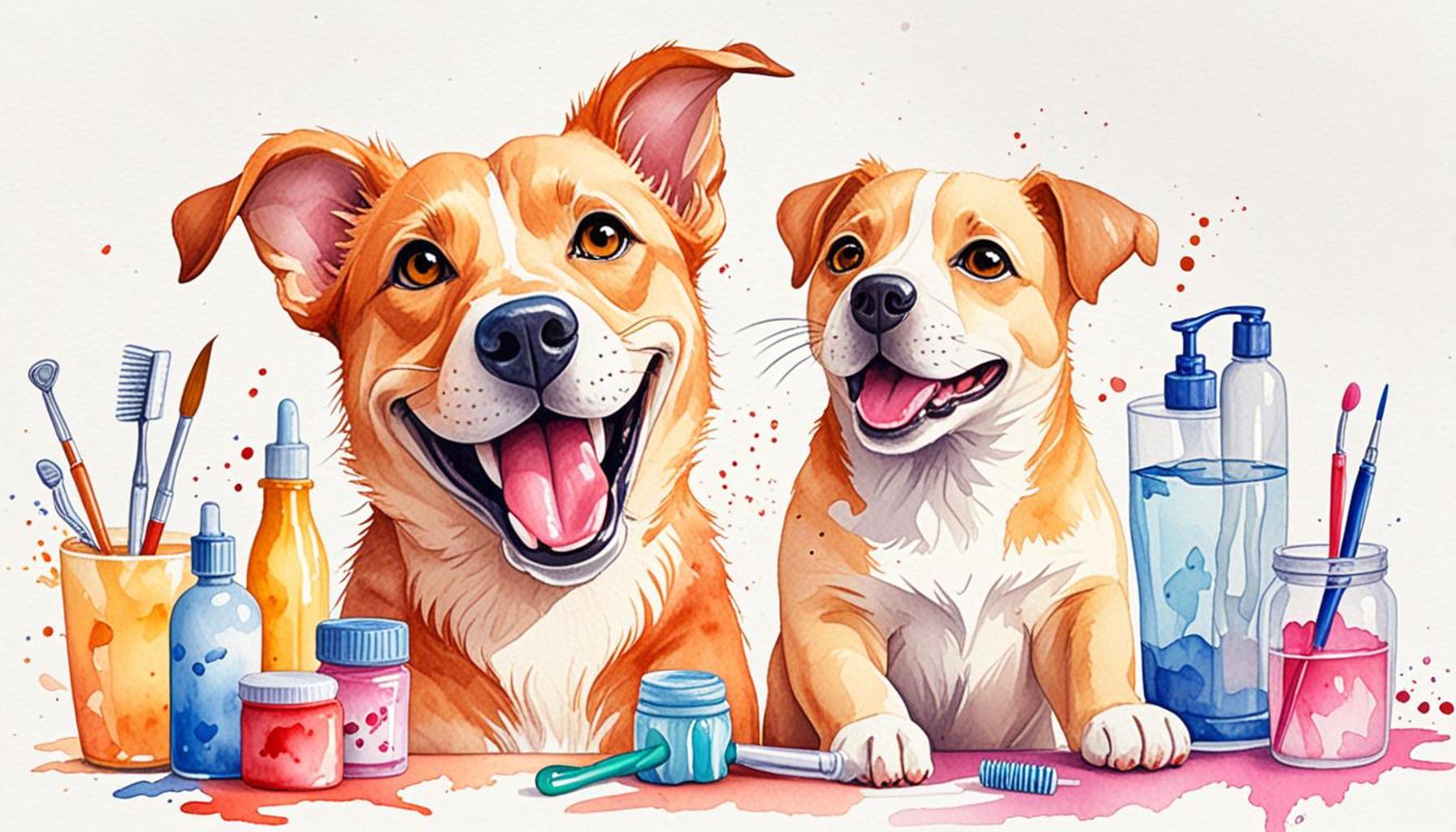Strategies for Dealing with Separation Anxiety in Pets

The Emotional Toll of Being Left Alone
Separation anxiety is more than just a minor inconvenience for pet owners; it is a significant emotional challenge that affects both the pet and their human companions. This condition, particularly prevalent in dogs, manifests as behavioral issues when pets are left alone or separated from their human caregivers. The distress can lead to a range of problem behaviors that not only impact the pet’s well-being but also create strain within households.
Recognizing the Signs of Separation Anxiety
Identifying separation anxiety in pets is crucial for timely intervention. Here are several indicators to watch for:
- Excessive barking or howling: Many dogs exhibit vocalization when left alone, attempting to call for their owners. This can be distressing for neighbors and may lead to complaints.
- Destructive behaviors: Pets may resort to chewing furniture, tearing up household items, or clawing at doors and windows in an attempt to escape. For example, a dog might chew the leg of a valuable chair, causing both emotional and financial distress for the owner.
- Repeated attempts to escape: Some pets may claw at doors or dig under fences as they try to reunite with their owners. This behavior can lead to injuries and poses significant risks if the pet escapes outside.
- Soiling indoors: A pet that is house-trained may suddenly begin to have accidents indoors when left alone due to anxiety. This behavior can be frustrating for pet owners and may require retraining efforts.
- Excessive clinginess: Pets suffering from anxiety often exhibit clingy behavior, needing constant attention and showing distress when owners prepare to leave. This may include following their owners around the house or showing signs of panic as the owner grabs keys or their bag.
Why It Matters
Understanding and addressing separation anxiety is not just essential for the well-being of your pet but also for maintaining a peaceful living environment. When a pet struggles with anxiety, it can lead to a breakdown in the bond between pet and owner, causing tension in the household. Addressing these behaviors early can lead to better outcomes for both parties.
Fortunately, there are effective strategies for managing separation anxiety. Techniques such as desensitization, crate training, and providing engaging toys can ease anxiety symptoms. Additionally, many pet owners find it beneficial to consult with veterinarians or professional trainers who specialize in behavioral issues.
By exploring and implementing these methods, you can create a more comforting environment for your pet, leading to a happier, healthier relationship. In the following sections, this article will delve deeper into various tactics and practical tips aimed at mitigating separation anxiety, ensuring a brighter future for both you and your beloved companion.

DIVE DEEPER: Click here to uncover the latest trends
Effective Techniques for Easing Separation Anxiety
When it comes to tackling the challenges of separation anxiety in pets, the key lies in a combination of understanding, patience, and structured approaches. Pet owners might feel overwhelmed when faced with a furry companion exhibiting distressing behavior, but with the right strategies, they can foster a sense of security and calm within their pets. Here, we will discuss several effective techniques that can help alleviate the symptoms associated with separation anxiety.
Desensitization and Counter-Conditioning
One of the most widely recognized strategies for managing separation anxiety is through desensitization and counter-conditioning. This process involves gradually getting your pet accustomed to being alone. Start by leaving your pet alone for short periods, ideally just a few minutes, and then increase the duration gradually as they become more comfortable. The goal is to help them learn that being alone does not equate to fear or distress.
For counter-conditioning, reward your pet for calm behavior when you prepare to leave. This could mean giving them a treat or engaging them with a favorite toy as you head out the door. Associating your departure with positive experiences can make the concept of being alone more bearable for your pet.
Crate Training
Many pet owners find success using crate training as a means of providing a safe space for their pets during times of separation. A crate should be viewed as a cozy sanctuary rather than a punishment. Introduce your pet to the crate gradually, allowing them to explore it and rewarding them with treats or toys when they enter. Once they associate the crate with comfort, you can start leaving the door closed for brief periods, slowly extending the time as their confidence grows.
It is crucial, however, that the crate never becomes a long-term confinement solution. The crate should not be used excessively, as this could exacerbate anxiety rather than alleviate it.
Interactive Toys and Activities
Engaging your pet’s mind and body is a significant element in reducing anxiety. Introducing interactive toys, such as puzzle feeders and treat-dispensing balls, can help keep your pet entertained while you are away. These types of toys encourage problem-solving and physical activity, which divert their attention from feelings of anxiety. Moreover, leaving behind a piece of your clothing can provide comfort and a sense of belonging to your pet during your absence.
Routine and Predictability
Pets thrive on routine and predictability. Establishing a consistent daily schedule for feeding, walks, playtime, and relaxation can help build a sense of security for your pet. When they know what to expect, their anxiety can decrease significantly.
Implementing these strategies requires commitment and time, but the rewards are invaluable. Not only will you improve your pet’s mental health and behavior, but you also create a more harmonious household. Next, we will explore the role of professional help and additional products that can aid in alleviating separation anxiety in pets.
Strategies for Dealing with Separation Anxiety in Pets
Pets can experience separation anxiety in various degrees, leading to destructive behavior, excessive barking, or depression when left alone. Understanding effective strategies can improve your pet’s well-being significantly.
| Technique | Description |
|---|---|
| Desensitization Training | Gradually acclimating your pet to being alone for short periods and gradually increasing that time. |
| Positive Reinforcement | Using treats or toys to reward your pet for calm behavior during separation, reinforcing a sense of security. |
| Creating a Safe Space | Setting up a comfortable area with favorite blankets or toys can help alleviate anxiety while alone. |
| Interactive Toys | Engaging toys or puzzles can distract pets, reducing anxiety by keeping their minds active while you are away. |
Implementing these strategies fosters a sense of comfort and security in your pets, encouraging healthier coping mechanisms. Understanding your pet’s behavior and responding to it with compassion can lead to a significant reduction in their anxiety levels, ultimately enhancing their quality of life. By recognizing the signs and addressing them proactively, you can create a more harmonious environment for both you and your furry companions.
DIVE DEEPER: Click here to discover the latest pet nutrition trends
Professional Assistance and Supportive Products
While many pet owners successfully address separation anxiety using self-guided strategies, there are times when seeking professional help becomes necessary. Veterinarians and animal behavioral specialists are invaluable resources in these situations. They can assess the severity of anxiety symptoms and provide tailored recommendations, which might include behavioral therapy or medications designed to reduce anxiety levels in pets.
Consulting a Veterinarian
When the symptoms of separation anxiety escalate into more severe behavioral issues, a trip to the veterinarian is warranted. They can rule out underlying health problems contributing to stress and recommend appropriate treatment options. In some cases, they may prescribe medications such as antidepressants or anti-anxiety drugs to help calm your pet while you’re implementing other strategies. It’s essential to follow the veterinarian’s guidance closely, as they can provide insights that can drastically improve your pet’s well-being.
Behavioral Therapists and Training Programs
Several training programs focus specifically on behavioral issues, allowing pets to learn coping mechanisms alongside their owners. Obtaining the help of a certified animal behaviorist can be particularly beneficial, as these professionals use science-based methods to modify behavior. They can observe your pet’s reactions and suggest personalized strategies that fit your household dynamics. Additionally, many pet training centers now offer specialized classes focusing on anxiety management, where pups and owners can learn to navigate separation challenges together.
Calming Products and Accessories
In addition to behavioral modifications, pet owners can explore various calming products designed to ease anxiety. Common options include:
- Adaptil Diffusers or Sprays: These products emit pheromones that mimic those released by mother dogs, promoting feelings of safety and security.
- Thundershirts: This snug-fitting garment applies gentle pressure to the pet’s body, similar to swaddling a baby, which can help soothe anxious behaviors.
- Calming Treats and Supplements: Available at most pet stores, these treats often contain ingredients such as melatonin, L-theanine, or chamomile, known for their calming properties.
- White Noise Machines: Background noise can drown out triggering sounds from outside, providing a more relaxing environment during your absence.
It’s essential to experiment with these products in tandem with structured behavioral strategies to gauge what works best for your pet. Individual reactions can vary, and while some pets may respond well to pheromone products, others may find more relief from a snug wrap like a Thundershirt. Monitoring your pet’s responses to these interventions will allow you to make informed decisions about their care.
Community Support and Resources
Pet owners grappling with separation anxiety in their pets can benefit from seeking out community resources as well. Online forums and local pet support groups can offer a platform to share experiences and learn from others in similar situations. Additionally, certain organizations may offer workshops or seminars on pet behavior, further enhancing your understanding of the condition and ways to manage it effectively.
By accessing professional help, exploring calming products, and engaging with a community of fellow pet owners, you can create a comprehensive approach to help your pet overcome separation anxiety. Tailoring these strategies to your pet’s unique needs will pave the way towards a more tranquil coexistence.
DISCOVER MORE: Click here for essential tips
Conclusion
In tackling the challenges of separation anxiety in pets, it is imperative for pet owners to understand that no single solution fits every situation. Through a combination of structured approaches—ranging from environmental changes and gradual desensitization to professional counseling and calming products—pet owners can significantly alleviate their furry companions’ anxiety. Recognizing the signs of distress early allows for intervention before symptoms escalate, leading to a healthier, happier pet.
With the help of a veterinarian or a certified animal behaviorist, pet owners can gain valuable insights tailored to their pet’s specific needs. Incorporating calming products like pheromone diffusers, Thundershirts, and natural supplements can further complement behavioral strategies, offering multifaceted approaches to soothe anxious pets. Engaging with community resources provides additional support; connecting with other pet owners can yield shared experiences and practical advice, contributing to an enriching support network.
Ultimately, the journey towards managing separation anxiety is a collaborative effort that requires patience, understanding, and a willingness to explore different solutions. By investing the time and care necessary to address these issues, pet owners not only enhance the quality of life for their pets but also foster a more harmonious household. As we continue to learn about our pets’ emotional needs, embracing these strategies for dealing with separation anxiety can lead to a transformative and soothing experience for both pets and their owners alike.


